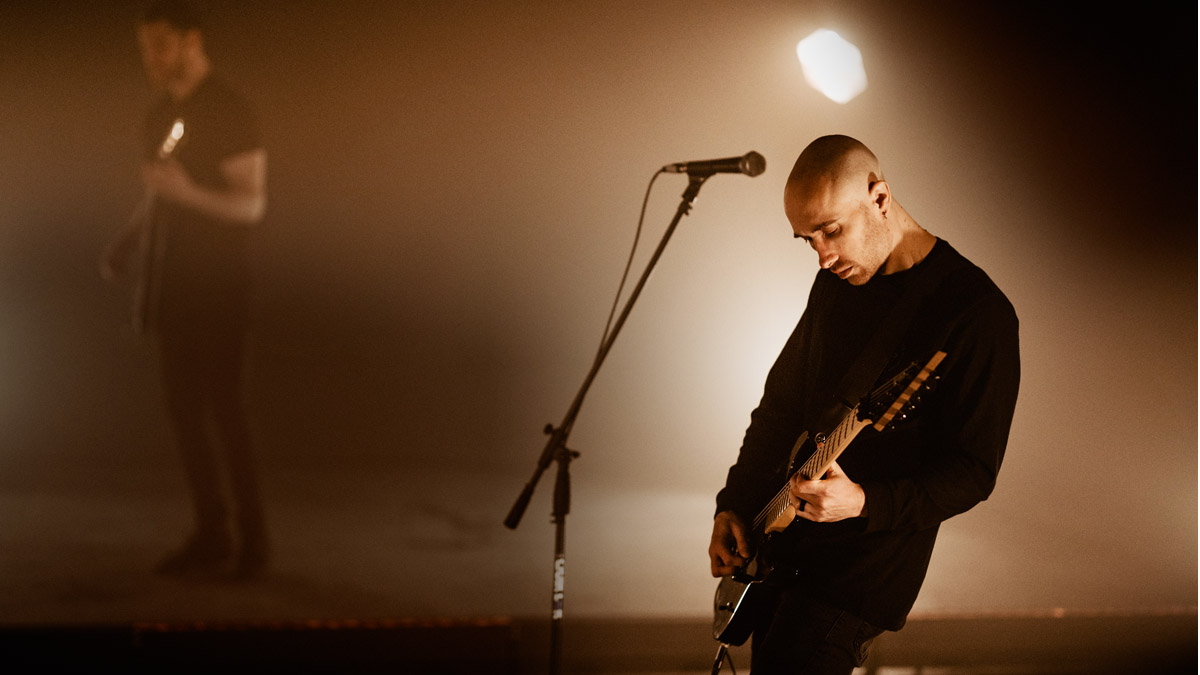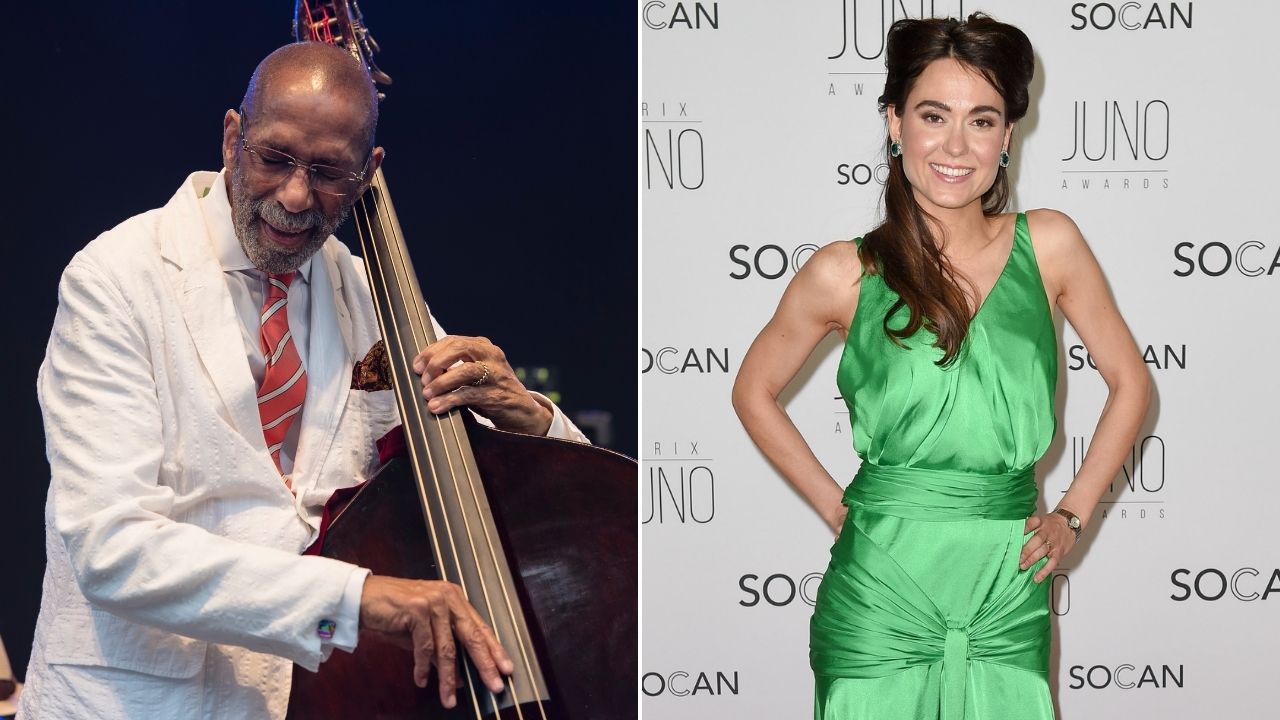Sylosis's Josh Middleton: "I always try and balance out the shreddy stuff with feel and melody"
The Architects guitarist explains why he felt the time was right to resume his frontman duties in the revered British metal outfit

"It was a slow realization, I guess,” answers Josh Middleton, when asked about the moment he realized Sylosis would definitely be making a return.
In 2016, he announced the metal band he formed in Reading when he was just 15 years old were going on hiatus, freeing up the time needed to join Architects initially as a live guitarist and, soon after, as a full-time member. It was a move that - in the eyes of many fans - left the future of his original group shrouded in uncertainty...
“What a lot of people don’t know is that I split the band at the end of our last tour in March 2016,” explains Middleton. “I was really unhappy in the band and felt I’d boxed myself in, musically. It was like there were all these self-imposed restrictions about what we could and could not be. So I basically told the guys I didn’t really want to do it anymore.”
I had the idea of starting a new band and was already writing music from a fresh perspective, then I realized it wasn’t too different to Sylosis
As fate would have it, some of the music heard on this year’s Cycle Of Suffering was actually composed with a new project in mind - one free of the self-imposed restrictions that were getting in the way. There was just one problem: a lot of it sounded like Sylosis...
“I actually had the idea of starting a new band and was already writing music from a fresh perspective, then I realized it wasn’t too different to Sylosis - so I came back round to thinking it could work,” he laughs.
“I guess I needed to think of it as a new band to realize I didn’t need to be worried about doing whatever I wanted. Just as I was beginning to come round to the idea of re-starting Sylosis, after amassing all these songs, a new path opened up for me in Architects...”
After what happened with Sylosis in 2016, how did you ensure you wouldn’t end up going down the same routes?
All the latest guitar news, interviews, lessons, reviews, deals and more, direct to your inbox!
“It was less about my guitar playing or the instrumentation, I guess, and more about stylistic things - what kind of music we should play. Sylosis has had a very strict, almost elitist viewpoint on metal. I wanted to break all the rules and stop worrying about things sounding too much like whatever, and just enjoy what I’m playing.
"Sylosis will always have technical elements to it, and our comeback single I Sever is just as technical as we’ve ever been. Some parts were very tricky to play while doing vocals, with these weird rhythms that are hard to sing over. I ended up chipping away at the album over the years, leaving enough time to understand how I felt about Sylosis and whether I wanted to continue with it.
"The answer was yes! I love playing these songs, and then it all worked out schedule-wise with Architects taking some time off.”
You’ve been playing massive arenas with Architects. What have you learned that you might not have been aware previously about touring at that level?
I will always love playing fast music, but maybe going 220bpm in an arena can sound a bit wishy-washy after a while
“I really admire Sam [Carter] as a frontman. There are certain things I’ve picked up from him, because he’s so good with crowds. We had done some arenas in Sylosis, supporting bands like Megadeth - obviously not headlining - and it’s all about what translates onto those big stages.
"I will always love playing fast music, but maybe going 220bpm in an arena can sound a bit wishy-washy after a while. Some songs seem to suit certain environments I guess. The goal has always been to put on the best show possible... I guess touring in Architects has been a lot more comfortable!”
What would you say are the main differences in your approaches for each band?
“Stylistically, the bands are very different. When I joined Architects, I wanted to stick to that sound. One of the best comments we had with the first single from Holy Hell [Hereafter] was someone saying it sounded just like the last album. I thought that was cool because I’d written that one! That was exactly the compliment I needed when I was trying to make something that sounded like Architects.
“Sylosis has always been in E standard up to this point, though the new album is in D standard, which is still a relatively high tuning for metal. Architects is the total opposite, there are songs in G# or F#. The tuning is generally C# standard, which isn’t that low, but we tune the lower string down like Mastodon or Neurosis do - with low-octave power chords.
"The main thing to get used to was playing really thick strings, which are still nowhere near as tight when you play in standard. So I think the tunings are the main difference and I really notice that in how I pick.”
What gauges have you found work best for these lower tunings?
“The lowest I’ve tried is a 0.72 - which is very thick, but doesn’t quite sound bright enough. There’s a balance between string tension and dullness, so I tend to use a 0.68; it’s thick but still flops all over the place. As much as I love digging in and playing aggressively, if you play too hard you might go sharp.
"It took a while to get used to a lower string that was a huge leap from the tuning of the other strings, unlike seven-strings or eight-strings that are more relative. I found writing riffs in this tuning was quite refreshing, to be honest."
"I think guitarists get stuck in ruts just staring at the fretboard and knowing what frets to use for different kinds of riffs in different keys. If you know modes and scales, you kinda see the same shapes. But when you have this weird tuning, it forces you to write riffs in different ways. You can’t rely on things like power chords because you might not be able to play them.”
I just want our music to be powerful, whether that’s through emotion and melody or pure heaviness. Sometimes, you might just need to chug on one note!
Your solo in I Sever opens with some wide pentatonic legato stretches that are almost a bit Zakk Wylde...
“I agree! I really like Zakk Wylde as a player, but I don’t really tend to play that style myself. It’s weird, I like a lot of bluesy guitar players though I don’t really like blues music. I love David Gilmour, he’s incredibly bluesy. Same with Zakk, there are a lot of bluesy licks in a shreddy way, which you wouldn’t really find in my playing.
"That said, there are some big pentatonic leaps that feel reallysatisfying. People’s ears are drawn to big intervallic leaps - that’s why sweep-picking, string-skipping or fast pentatonics can sound faster.
"You’re skipping over a lot of notes, which can make it feel like you’re covering more ground quicker. So I guess Zakk isn’t an obvious influence, but I do like those big pentatonic stretches.”
For some of the slower, hooky parts near the end of the solo, you harmonise to make more of a statement...
“I always try to balance out the shreddy stuff with feel and melody, something memorable to stick in there. When you double-up things, harmonizing an octave lower or higher can really emphasize the notes - it’s a great tool for hammering a particular melody home and focussing on key points in your solo. It depends what the song calls for... I Sever is quite intense but also moody and epic, so I wanted my solo to transition into that as well.”
It’s interesting how the riffs go from very technical to the simplicity of one fast chug; that kind of switch is very powerful...
“That’s a perfect example of what I wouldn’t have allowed myself to do three or so years ago. I would have been worried it’s too simple and not technical enough, so therefore too meathead and beneath this band. I just want our music to be powerful, whether that’s through emotion and melody or pure heaviness. Sometimes, you might just need to chug on one note!"
Shield uses arpeggiated chords to color in some of the lower-end riffs. How do you write those parts?
“One thing that works for me, especially with melodic stuff like Shield, is to write on a piano. We have one at my parent’s house and whenever I’m round there, I always have to sit down. It’s so refreshing to play because I never really had lessons. It’s different to the fretboard for me, where I feel like I know where all the notes are.
"I view the piano a bit more blindly, I just put my hands around and play about until certain melodies perk my ears up. I’m always looking for a good chorus or epic middle-eight, and I tend to work backwards from there, adding riffs in later. So the chorus of Shield actually came to me on piano, and then I wrote the song on guitar.
"Writing on different instruments breaks you out of your comfort zone. You might even come up with the same chord progressions, but the fresh perspective can make it feel new and exciting.”
Arms Like A Noose has a very discordant acoustic intro. Is that something you might have picked up from listening to artists like Opeth and Devin Townsend?
“Those are both artists who have influenced me, for sure. When I really got into writing key changes, I was listening to Dimmu Borgir. A lot of black metal is just moving a minor chord around, it’s not like traditional Western chord progressions, instead you’re changing key with every chord. It can be very dark-sounding.
Abandon goes a bit 70s prog in the middle-eight, influenced by bands like Rush, Genesis and even Kate Bush, thanks to the 80s-esque synths, plus there’s a chilled, Gilmour-y guitar solo
"Opeth are great at that, even on an acoustic guitar, those movements can be really cinematic and moody. There’s no real approach for that stuff with me, I just blindly move around minor shapes, occasionally sticking in a major somewhere. Then I have to make sure every note on top of that chord is in key, but then the key will change...”
Similarly, Abandon incorporates some more unusual atmospherics...
“It goes a bit 70s prog in the middle-eight, influenced by bands like Rush, Genesis and even Kate Bush, thanks to the 80s-esque synths, plus there’s a chilled, Gilmour-y guitar solo. It always feels like a vibe-killer sticking something like that in the middle, so that’s why songs like that usually end up last.
Something big, slower and epic can take the sting out of an album if not put in the right place
"Something big, slower and epic can take the sting out of an album if not put in the right place. Though it’s not really what we’re known for, our fans should be used to the more down-tempo tracks by now. It’s probably my favorite song out of everything I’ve written, actually. It felt very powerful to me.”
What was the main gear you used on the album?
“It’s pretty much the same for Architects - my sound doesn’t differ much between the bands, even though there’s the tuning difference. I recorded this album with an ESP Horizon, with the Fishman Fluence Moderns, going into a dual-channel Peavey 6505+ though on the rhythm instead of lead. There’s so much mid-range on the green channel, that I kept the mids around one. It’s not scooped, even with the mids off it comes through really clear.
"That went into an oversized Mesa/Boogie cab with 2005 Vintage 30s in - I’ve gotten really nerdy about ages of speakers. There was a period where V30s where sounding incredible in Mesa cabs, between 2000 and 2005. I mic up with an SM57 and, apart from the Maxon OD-808 boost in front tightening the low-end, that was about it.
"I don’t push the drive or boost with high-gain amps, I keep the volume at noon, the drive nearly off and tone at 11 o’ clock. So it’s more for tightening and filtering before the signal hits the amp.”
Is your 6505+ still the main profile on the Kemper you use live?
“At home I have a handful of heads - a 6505, 6505+ and a block letter 5150 - and they do sound different enough. I switch between them a lot but it will always be one of those amps. I make Kemper profiles of everything I do and use that live for both bands. That combination of heads, cabs and speakers always brings a clear mid-range no matter what you dial on the amp.”

What kind of ambient effects do you use for leads or background noises?
“I’m not a big pedal guy, but I love delay on my leads. It’s probably quite common but I’m a fan of the Strymon BigSky. There’s a setting on there called Cloud that has this incredibly unique type of reverb. One thing I’ve always done is use ambient guitars layered up in the background. It probably comes from listening to Dimmu Borgir, I liked the ambience but I didn’t want to have keyboards.
"There was a band called Misery Signals whose first album was produced by Devin Townsend. He added a load of ambient stuff on there, particularly on the first track. Since 2005, I’ve always used guitars for ambience, so long delay trails and mushy nine-second reverbs are definitely fun to play with. I like that almost choral echo.”
Finally, you have a new member in bassist Conor Marshall - who also plays in Conjurer. What was it that made him a good fit?
“I love Conjurer. They’ve been on my radar for quite a while and I’d say they are definitely one of the best emerging British metal bands in recent years. They have a lot of influences I like - you can hear a lot of Mastodon and Neurosis vibes in there but it’s still quite fast and energetic, which I like.
"As much as I love all the doomy stuff, I’m a big fan of that intensity and obvious aggression. I reached out to Conor because he looks great and runs around on stage which helps me being behind a mic. Funnily enough, we’ve only met a handful of times...”
Into the pit

Josh gives us his tips for ultra tech-metal tightness...
1. Don't put the guitar down
“Just always have a guitar on you. As long as you don’t annoy your partner or family, you can sit there hammering out scales watching TV. You don’t even need to hear it, you get your fingers used to whatever exercise or lick it is. It will always go in, even if you’re not really consciously practicing and stuck into some movie or TV show.”
2. Keep an eye on the angle of your wrist
“The main thing for me was learning Battery by Metallica and playing it over and over again, all day long. I remember when I couldn’t do that - and it was so frustrating. I realized a lot of it came down to your wrist angle.
"If you hold your wrist out straight, with your pinky at three o’ clock, then twist the pinky down to half four - that’s my starting point for picking. Whenever I’ve taught other guitarists who have been struggling with picking, I’ve noticed their pivot points were different.”
3. Practice unplugged as well as with distortion
“That’s a big one for me. When the distortion is on, there can be all these unwanted string noises and scrapes that you might not be aware of. I think people need to practice in two different ways - with an amp, using a lot of gain, but also with a totally clean sound or not plugged in at all.
"If it sounds clean unplugged, hopefully it will sound clean distorted… But you have to be used to playing distorted so you’re muting your strings properly and not getting unwanted noise!”
4. Practice slowly and steadily
“A lot of guitar players want to skip as many steps as possible and play Paul Gilbert licks just like he plays them. But shredding through things quick like that might mean you’re not that tight or clean. What a lot of people hate doing is practicing really slowly, but that’s actually how I spend most of my practice time.
"It’s all really boring slow speeds and picking every note assertively. I keep going round and round again, I don’t try to speed it up. I feel like if it’s clean and tight slow, you will get to where you want to be - it won’t take that much longer but you’ll be better for it.”
- Sylosis's Cycle of Suffering is out now via Nuclear Blast
Amit has been writing for titles like Total Guitar, MusicRadar and Guitar World for over a decade and counts Richie Kotzen, Guthrie Govan and Jeff Beck among his primary influences as a guitar player. He's worked for magazines like Kerrang!, Metal Hammer, Classic Rock, Prog, Record Collector, Planet Rock, Rhythm and Bass Player, as well as newspapers like Metro and The Independent, interviewing everyone from Ozzy Osbourne and Lemmy to Slash and Jimmy Page, and once even traded solos with a member of Slayer on a track released internationally. As a session guitarist, he's played alongside members of Judas Priest and Uriah Heep in London ensemble Metalworks, as well as handled lead guitars for legends like Glen Matlock (Sex Pistols, The Faces) and Stu Hamm (Steve Vai, Joe Satriani, G3).





